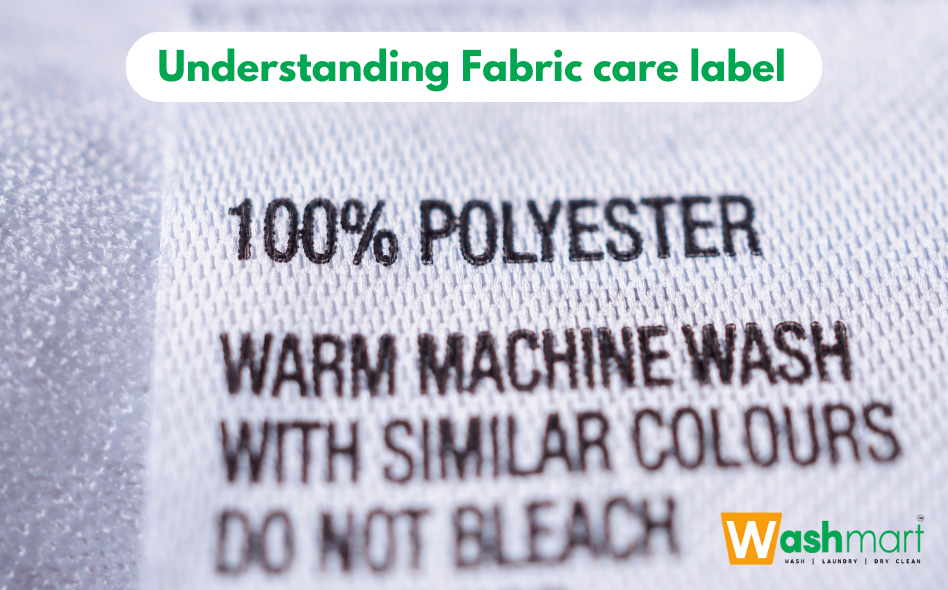
How to Understand Fabric Care Labels
In today’s fast-paced world, understanding fabric care labels is a vital skill for anyone looking to maintain the longevity and quality of their clothing. Proper care ensures that your favorite garments remain in excellent condition, saving you money and reducing your environmental footprint. The enigmatic symbols and terms on fabric care labels can be perplexing, but fear not; we are here to unravel this mystery and equip you with the knowledge needed to become a fabric care expert.
Lets Understand the Fabric Care Labels/Symbols

Fabric care labels often feature a series of symbols that provide essential information about how to care for the garment. Let’s break down the most common symbols you’ll encounter:
1. Washing Symbols
- Machine Wash: A symbol resembling a washing machine indicates that the garment can be machine-washed.
- Hand Wash: A hand in a tub of water signifies that the item should be hand-washed.
- No Washing: A crossed-out water tub means the garment should not be washed.
2. Bleaching Symbols
- Bleach Safe: A triangle indicates that the garment can be bleached.
- Non-Chlorine Bleach Only: A triangle with two slanted lines through it implies that only non-chlorine bleach should be used.
- No Bleach: A crossed-out triangle means that the garment should not be bleached.
3. Drying Symbols
- Tumble Dry: A square with a circle inside represents that the item can be tumble-dried.
- Line Dry: A horizontal line indicates that the garment should be hung to dry.
- No Drying: A circle with a crossed-out symbol means that the item should not be dried.
4. Ironing Symbols
- Iron Safe: An iron symbol signifies that the garment can be ironed.
- Low Heat Iron: A dot inside the iron symbol indicates that only low heat should be used while ironing.
- No Ironing: A crossed-out iron symbol means the garment should not be ironed.
5. Dry Cleaning Symbols
- Dry Clean Only: A circle signifies that the garment should be dry-cleaned.
- Do Not Dry Clean: A crossed-out circle implies that dry cleaning is not recommended.
Understanding the Care Label Text
In addition to symbols, fabric care labels often include text instructions. These instructions provide specific details on how to care for your garment. Here are some common terms you might encounter:
- Normal Wash: This suggests that the garment can withstand regular machine washing.
- Delicate/Gentle Cycle: Delicate garments should be washed on a gentle cycle to avoid damage.
- Cold/Warm/Hot Water: The appropriate water temperature for washing.
- Mild Detergent: Indicates the use of a mild, non-bleaching detergent.
- Do Not Wring: This instruction advises against wringing out the garment to avoid stretching or damaging the fabric.
- Hang to Dry: Hanging the garment until it dries naturally.
- Press Inside Out: Ironing the garment inside out to protect the fabric’s surface.
- Professional Dry Clean Only: The garment should only be cleaned by a professional dry cleaner.
The Importance of Following Care Label Instructions

Understanding and adhering to fabric care labels is essential for several reasons:
1. Prolongs Garment Lifespan
By following the care instructions, you can extend the life of your clothing. Different fabrics require specific care to prevent fading, stretching, or damage. Ignoring care labels can lead to premature wear and tear.
2. Maintains Fabric Quality
Proper care ensures that your garments retain their original color, shape, and texture. It prevents pilling, fraying, and shrinkage, keeping your clothes looking new.
3. Saves Money
When you take good care of your clothes, you reduce the frequency of replacements. This translates to cost savings in the long run.
4. Eco-Friendly
By preserving your garments, you contribute to reducing the environmental impact of the fashion industry. Fast fashion is a major contributor to pollution, and responsible care can help mitigate its effects.
Special Considerations
While care labels provide general guidelines, there are some special considerations to keep in mind:
- Stains: Treat stains promptly to prevent them from setting in. Follow stain removal guidelines that correspond with the fabric type.
- Repairs: If a garment needs repair, consult a professional or use appropriate sewing techniques to ensure it remains in good condition.
- Storage: Proper storage can prevent wrinkles and maintain fabric quality. Use hangers, garment bags, or folding techniques suitable for different types of clothing.
Conclusion
Understanding fabric care labels is not just about extending the life of your clothing but also about making environmentally responsible choices. By following these guidelines, you can ensure that your favorite garments remain in excellent condition for years to come. So, the next time you’re faced with a perplexing care label, remember this comprehensive guide to help you make the right choices.
